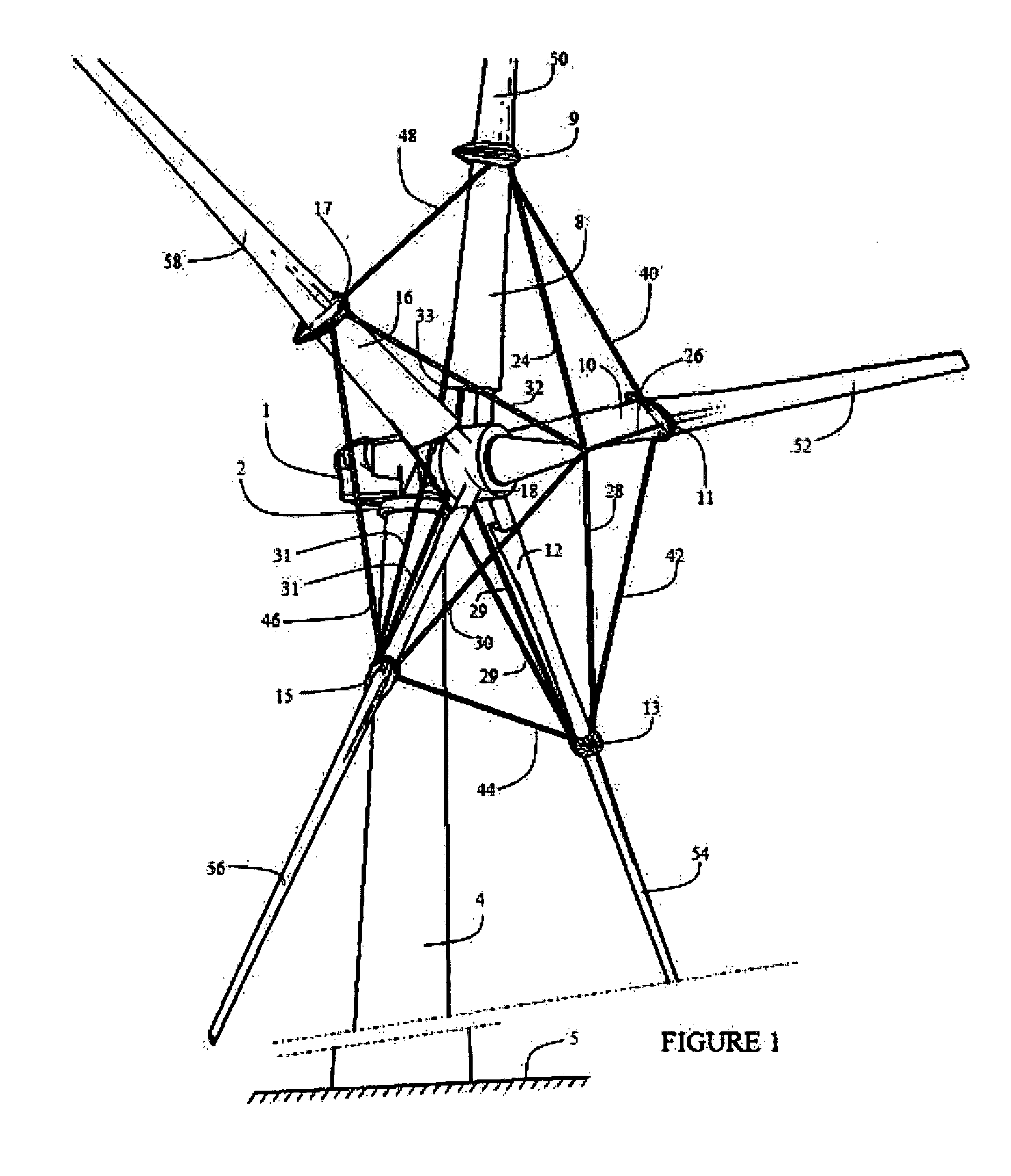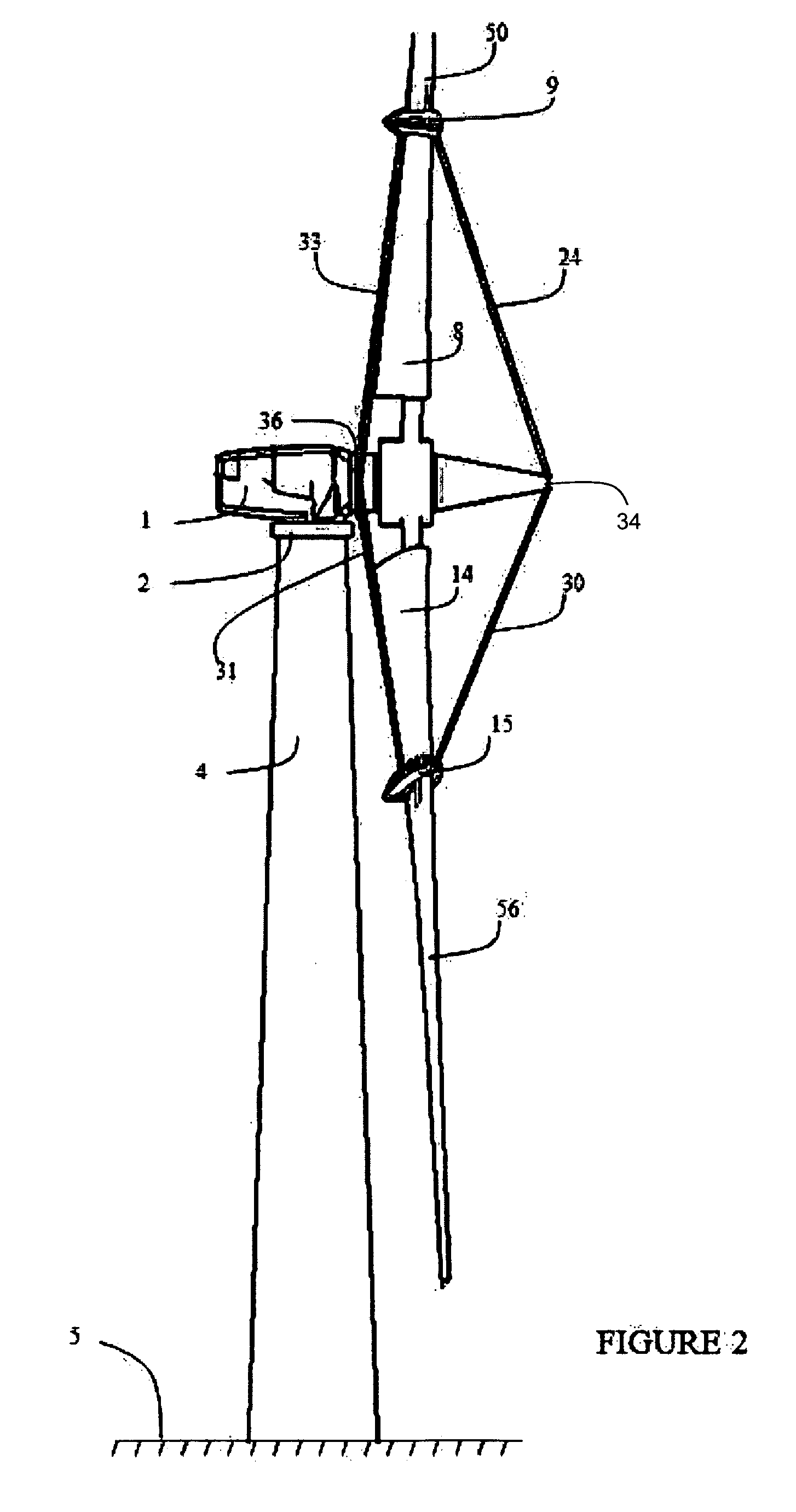Cable-stayed rotor for wind and water turbines
a fluidflow turbine and rotor technology, applied in the direction of rotors, marine propulsion, vessel construction, etc., can solve the problems of fatigue life, large blades, and structural limitations of the length to which typical blades may be extended, and achieve the effects of less cost, convenient blade transportation, and greater performan
- Summary
- Abstract
- Description
- Claims
- Application Information
AI Technical Summary
Benefits of technology
Problems solved by technology
Method used
Image
Examples
Embodiment Construction
[0028]Refer to FIG. 1, which is a perspective view of a rotor system with linked, rotating inner and outer blade sections in which applicant's invention is embodied. The wind power-generating device includes an electric generator housed in a turbine nacelle 1, which is mounted to a turbine yaw base 2 atop a tower structure 4 anchored to the ground 5. The turbine yaw base 2 is free to rotate in the horizontal plane such that it tends to remain in the path of prevailing wind current. The rotor system has a hub assembly 6, which includes inner blade sections 8, 10, 12, 14, 16 attached to a hub 18. Each inner blade section is provided with a collar 9, 11, 13, 15, 17, respectively. The hub assembly consists of hub structure extending fore and aft of where the blades are attached to the hub. The inner blade sections 8, 10, 12, 14, 16 extend from the hub structure.
[0029]Refer to FIG. 2. The inner blade sections 8, 10, 12, 14, 16 are further mounted in the hub assembly by a plurality of for...
PUM
 Login to View More
Login to View More Abstract
Description
Claims
Application Information
 Login to View More
Login to View More - R&D
- Intellectual Property
- Life Sciences
- Materials
- Tech Scout
- Unparalleled Data Quality
- Higher Quality Content
- 60% Fewer Hallucinations
Browse by: Latest US Patents, China's latest patents, Technical Efficacy Thesaurus, Application Domain, Technology Topic, Popular Technical Reports.
© 2025 PatSnap. All rights reserved.Legal|Privacy policy|Modern Slavery Act Transparency Statement|Sitemap|About US| Contact US: help@patsnap.com



